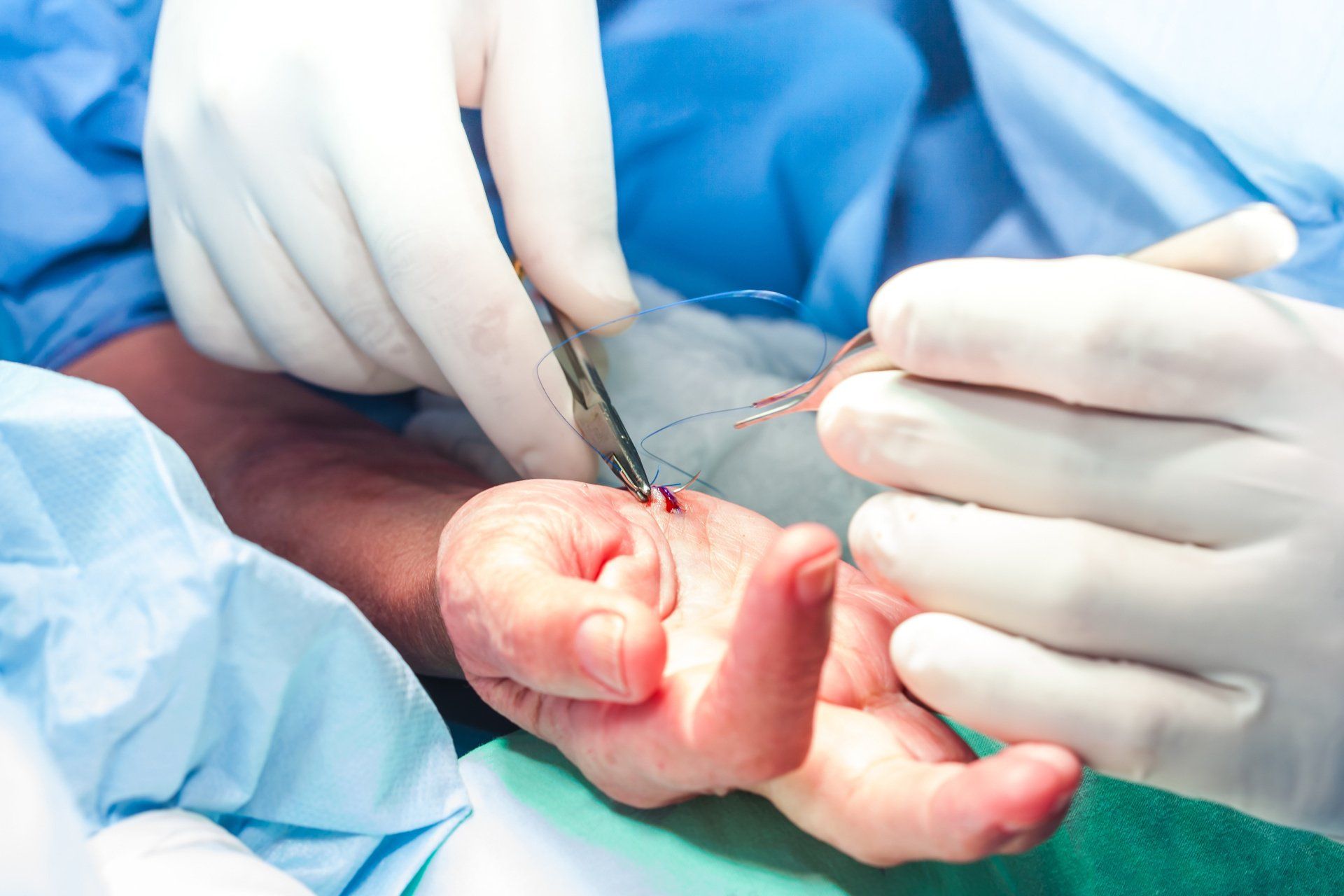Dupuytren's Contracture Treatment in Baton Rouge
RELATED PAGES
What is Dupuytren's Contracture?
Under the skin of the palm and fingers lies a fibrous layer of tissue called the fascia. This tissue stabilizes the palm and helps keep the skin taut. However, the fascia may tighten and thicken over time, gradually drawing the fingers inward, toward the palm. This condition is known as Dupuytren’s contracture, and it can increasingly affect hand mobility and function as it progresses.
What Causes Dupuytren's Contracture?
Like many conditions, there is no single known cause of Depuytren’s contracture. Rather, there are multiple factors that have been shown to increase patient risk. Among those that have been identified are:
- Genetics – Dupuytren’s contracture is commonly seen in families.
- Sex – Men are more commonly affected than women.
- Ancestry – Patients whose ancestors hail from northern Europe or Scandinavia are more likely to develop the condition.
- Healthy History – Patients who are also diagnosed with diabetes or seizure disorders are at an increased risk for the development of Dupuytren’s contracture.
- Age – Those who develop the condition typically do not experience symptoms until later in life.
What are the Symptoms of Dupuytren's Contracture?
Dupuytren’s contracture is a condition which develops slowly, over a period of several years. As the condition gradually progresses, there are signs that often appear, most notably involving the pinky and ring fingers, although the middle finger may also be impacted. A common first symptom is the thickening of skin on the palm, followed by pitting or dimpling. Firm lumps will begin to appear underneath the skin and fully extended or spreading the affected fingers will become increasingly difficult.
Fortunately, Dupuytren’s contracture is not typically associated with pain or discomfort. However, as the thickened cords of tissue expand, hand function can become increasingly limited and may begin to interfere with a patient’s ability to complete tasks.
How is Dupuytren’s Contracture Diagnosed?
Due to the classic presentation of Dupuytren’s contracture, it is typically diagnosed based solely on physical examination without the need for imaging tests. A physician will feel and visually observe for the lumps and thickening that are characteristic of the condition as well as test the range of motion of the affected fingers. They may document their findings with pictures and measurements so that they can determine how and if the disease is progressing during subsequent visits.
How is Dupuytren’s Contracture Treated?
While Dupuytren’s contracture cannot be cured, there are treatment options available that may help those suffering from severe and progressing cases. Among the possible treatments are:
- Steroid Injections – Injections of corticosteroid are frequently used to address areas of inflammation in the body. By being injected into the affected area of the hand, this steroid may be able to ease any discomfort and help slow the progression of the disease.
- Enzyme Injections – Xiaflex is an FDA-approved medication for the treatment of Dupuytren’s contracture. This enzyme can be injected into the tightened cords of fascia by a trained orthopedic surgeon to soften and weaken the tissue. Later, this could allow the physician to break the tight cords and straighten out the fingers.
- Needling – The tight cords under the skin may also be punctured and loosened through needling. The benefits of this treatment come from its ability to be used extensively throughout the hand and can be performed repeatedly should the condition return following the initial therapy.
- Surgery – In severe cases where hand function has been drastically impacted, a
Dupuytren's contracture surgical procedure called fasciotomy may be needed. During this procedure, an incision is made in the palm. Through that incision, the surgeon can then divide the thickened cords of tissue, releasing much of the tension and allowing the fingers to move more freely. This is known is a fasciotomy. In the most severe cases, however, sections of the tissue may need to be removed entirely. This procedure is known as a fasciectomy. Your surgeon can help you better understand the differences between the two and which is right for you.
Dupuytren's Contracture Specialists in Baton Rouge
MOVE MORE, HURT LESS.
QUICK LINKS
SIGN UP FOR OUR NEWSLETTER:
7301 Hennessy Blvd.
Suite 200
Baton Rouge, LA 70808
tel: (225) 766-0050
fax: (225) 766-1499
4463 LA 1 South
Suite A
Brusly, LA 70719
tel: (225) 766-0050
fax:
(225) 766-1499
19065 Dr. John Lambert Dr.
Suite 2100
Hammond, LA 70403
tel: (225) 766-0050
fax: (225) 766-1499
16158 Airline Hwy.
Prairieville, LA 70769
tel: (225) 766-0050
fax: (225) 766-1499
5000 O'Donovan Blvd.
Suite 306
Walker, LA 70785
tel: (225) 766-0050
fax: (225) 766-1499
Bone & Joint Clinic of Baton Rouge, Inc. complies with applicable Federal civil rights laws and does not discriminate on the basis of race, color, national origin, age, disability or sex.
Click to view our notice.
Bone & Joint Clinic of Baton Rouge | All Rights Reserved.



